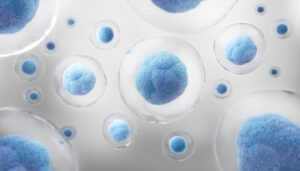
[Anusorn/Adobe Stock]
Cellular heterogeneity enables cells in the body to perform an array of functions, but it also plays a role in diseases like cancer as well. In oncology, this fact influences molecular therapy targets, tumor evolution as well as drug sensitivity and resistance. Cellular heterogeneity is also a consideration in areas such as immunotherapy, neuroscience, stem cell research and infectious diseases. By probing cellular heterogeneity in diseased tissues, drug developers can help uncover potential molecular targets for treatment, highlight varying drug sensitivities and unravel the mechanisms responsible for treatment resistance.
To learn more about the importance of cellular heterogeneity, we recently conducted an email interview with two executives at Bio-Rad Laboratories, Mina Zeinali, single cell field application specialist and Joby Chesnick, senior segment manager, single cell technologies at the company. In the following interview, Zeinali and Chesnick highlight how cellular heterogeneity can elucidate molecular therapy targets and drug resistance mechanisms, enabling more targeted and personalized therapies. They also note how researchers can draw from a variety of cell enrichment techniques and advances in liquid biopsy to improve the detection and analysis of individual cells in diseases such as cancer.
Can you highlight why cellular heterogeneity is important in medicine?

Mina Zeinali
Zeinali and Chesnick: Biological systems are composed of a multitude of various cell types, each with different structures and functions. The differences between these cells is called cellular heterogeneity. Defining the variation in cellular gene expression and regulation under changing developmental and environmental conditions is crucial if we are to expand our knowledge and understanding of tissue and organ function, as well as their associated pathologies.
In diseased tissues, understanding cellular heterogeneity opens a new platform for developing new therapies. Cellular heterogeneity may reveal molecular therapy targets, explain differential levels of sensitivity to drugs and also shed light on the mechanisms of resistance to therapy.
What are the different enrichment techniques used to study cellular heterogeneity, and how do they work?

Joby Chesnick
Zeinali and Chesnick: To study cellular heterogeneity, it is desirable to first enrich single cells from heterogeneous populations. Methods used for the identification, selection and enrichment of individual cells include biomarker-dependent methods (antigen targeting using antibodies), label-free technologies (based on size, density, deformability, electric charge, or other physical characteristics) bioinformatic techniques that attempt to derive unique signatures from pooled data sets. Among numerous applications, cell enrichment techniques play a critical role in cancer testing.
Cancer is a major disease that is driven by heterogeneous cell types. Circulating tumor cells (CTCs) are a biologically heterogeneous population of malignant cells that shed from a primary tumor, enter the circulatory system seed metastases at distant sites. The identification and analysis of individual CTCs in peripheral blood can improve cancer diagnosis and the establishment of effective treatment plans. However, the extreme rarity of CTCs in blood (<1 CTC per million nucleated blood cells) necessitates an effective method for enrichment that can isolate CTCs from the overwhelming background of blood cells.
What is the most common method to isolate CTCs?
Zeinali and Chesnick: The most common FDA-cleared method for the isolation of CTCs is based on the presence of cell surface biomarkers. This method employs antibodies targeting a membrane protein called Epithelial Cell Adhesion Molecule (EpCAM) to capture EpCAM+ CTCs. However, EpCAM- CTC subpopulations, which may be stem cell–like in nature, would be missed — a significant loss because they carry important information on a patient’s disease, outcome, cancer cells much more. Therefore, a current unmet need exists for the development of a more sensitive and specific method to enrich CTCs from patient samples.
Bio-Rad Laboratories recently introduced the Genesis Cell Isolation System with Celselect slide technology, which achieves fast, efficient selection and capture of viable individual cells (8-30 µm in size) from liquid biopsy, cell culture other liquid sample types using gentle microfluidics (56,400 individual microchambers) and size-based cell selection. Isolated cells can be labeled with fluorescent antibodies using automation, imaged directly for counting on Cell Select Slides counted using Bio-Rad’s Rare Cell Analysis Software. Alternatively, cells can be recovered from the slide for molecular and cellular downstream applications.
How has the development of new technologies impacted our ability to detect and analyze the heterogeneity of cells?
Zeinali and Chesnick: Innovative new technologies have enabled the analysis of individual cells and increased our understanding of biology at the single-cell level. The new single-cell technologies allow rapid and reliable isolation, processing profiling of individual cells for multiple downstream applications.
In cancer, tumor biopsy is the current gold standard for tumor profiling. However, it is an invasive technique and may be prone to missing variant tumor cells due to spatial heterogeneity. This type of bulk analysis approach can also obscure information from rare cell subpopulations. On the other hand, an innovative technique called liquid biopsy can be used to analyze single CTCs obtained from fluid samples like blood, urine, or saliva.
Liquid biopsy offers many advantages for cancer detection and monitoring, including that it is non-invasive and less costly than alternative approaches. Moreover, it offers the potential for single-cell genomic testing and the ability to monitor tumor evolution throughout treatment. The potential clinical applications of liquid biopsy are vast and include screening, identifying mutations that might be targetable, identifying mutations that can confer drug resistance, monitoring response to immunotherapy detecting minimal residual disease and/or detecting early relapse after curative intent treatment.
Studies in early-stage and advanced cancers have shown a significant correlation between the numbers and molecular characteristics of CTCs and the disease stage, as well as progression-free and overall survival. Single-cell diagnostics, including those based on CTC genomics, can be a powerful platform for monitoring targetable mutations to screen for a response to an immune checkpoint inhibitor. They can also aid in the development of completely novel therapeutic concepts for personalized medicine.
What are some examples of diseases where such heterogeneity plays a critical role in disease development and progression?
Zeinali and Chesnick: Cancers are major diseases characterized by heterogeneity and the evolution of phenotypic and molecular profiles throughout tumor development and progression. The rapid accumulation of mutations and other genetic defects, as well as the divergence of distinct subpopulations, could account for hallmarks of cancer, such as tumor recurrence and resistance to therapies that were initially effective at reducing tumor burden.
In breast cancer, the differential expression of markers such as Estrogen Receptor, Progesterone Receptor HER2 on biopsied cell populations is used to classify patients and determine therapy plans. These heterogeneous molecular profiles are indicative of tumor aggression, the likely location for organ-specific targets for tumor metastases, susceptibility to either hormone or HER2-inhibiting therapies, the likelihood of tumor recurrence even expected survival rates.
Similarly, several unique characteristics contribute to the aggressiveness of non-small cell lung cancer (NSCLC), including late detection, a high degree of tumor heterogeneity resistance to available therapies. Therefore, incorporating molecular analysis has led to advanced treatment plans that include targeted therapies immune checkpoint inhibitors. Like breast cancer, the identification of heterogeneous characteristics that indicate sensitivity to therapies has led to the development of numerous prognostic and predictive biomarkers.
How can the study of cellular heterogeneity lead to the development of more targeted and effective treatments for diseases?
Zeinali and Chesnick: Unraveling the heterogeneity of diseases will increase our understanding of the underlying mechanisms that drive their development and progression. This could greatly enhance efforts to mitigate or cure disease. In turn, methods that identify the heterogeneity between individual patients could lead to personalized therapies tailored to each person’s needs.
In NSCLC, patients with activating mutations in the epidermal growth factor receptor (EGFR) gene are more likely to respond to tyrosine kinase inhibitors (TKIs) compared to patients with wild-type EGFR. The discovery of heterogeneous EGFR molecular profiles in patients has led to successful targeted therapies designed to address their specific molecular vulnerabilities.
The implementation of novel liquid biopsy techniques could allow periodic screening for the emergence of relevant molecular targets. As downstream genomic sequencing and other molecular analyses advance in throughput and cost-effectiveness, it is expected that more promising drug targets will emerge. To date, however, the only approved liquid biopsy tests for plasma detection with high specificity for TKI prescription are for EGFR and ALK mutations.
Anything else important on the topic you would like to highlight?
Zeinali and Chesnick: The advancements in technologies for cell enrichment should be concurrent with advances in molecular and other downstream analyses. Future advances in genomics, proteomics, metabolomics, etc., will enable important multi-omics studies at the single-cell level with the potential to revolutionize medicine. The emergence of liquid biopsy techniques presents opportunities for widespread screening of single cells to enhance diagnoses in diseases such as cancer. To continue expanding what we can accomplish using this technique, there is a need for sensitive, specific accurate CTC enrichment technologies for personalized therapy in cancers that are associated with specific genomic alterations.